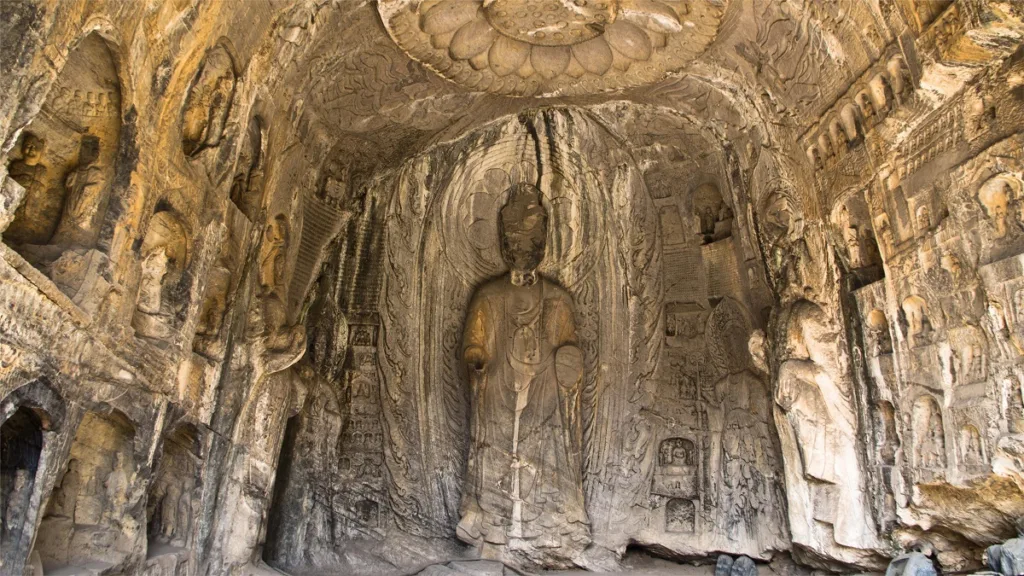龙门石窟莲花洞


Lotus Cave (莲花洞), situated within the Longmen Grottoes 在洛阳, was constructed between 525 and 527 AD. It derives its name from the giant lotus flower carved on its ceiling. This lotus design has inspired architectural features such as the lotus-shaped ceiling of the Great Hall of the People and the caisson ceiling of the Upper Yanggong Palace.
The central feature of Lotus Cave is the main Buddha statue flanked by two disciples and two bodhisattvas. The central statue depicts a standing figure of Shakyamuni Buddha wearing a simple yet elegant robe. This representation is known as the “Preaching Buddha,” reflecting Shakyamuni’s image when he traveled to spread his teachings. The disciples, depicted in shallow relief, accompany Shakyamuni on his journey. Unfortunately, the head of one of the disciples, Mahakasyapa, was stolen and is now housed in the Guimet Museum in France.
The main Shakyamuni statue stands at 5.10 meters tall and portrays the Buddha as if he had traveled from distant India to China, spreading Buddhism along the way. The disciples, Mahakasyapa and Ananda, are depicted respectfully at his side. The bodhisattva figures exude elegance and grandeur, embodying the solemnity and prosperity of the Buddha’s world.
The cave walls are adorned with numerous niches of various sizes, arranged in a harmonious layout. The niches feature intricately carved canopies with arches, cornices, and decorative elements like garlands, curtains, and tassels. The carvings depict floral motifs, geometric patterns, and scenes from Buddhist stories with exquisite detail.
Above the southern wall, there is a row of tiny carvings depicting a thousand Buddhas, meticulously crafted with lifelike details. Below, in the second niche from the bottom, two exquisite Buddhist stories are depicted, accompanied by celestial beings dancing above.
The entrance lintel of the cave is adorned with flame motifs and a lion-shaped pedestal, showcasing fine craftsmanship. Above, an inscription “伊厥” by Zhao Yan, a Ming Dynasty official, adds historical significance to the cave.
Surrounding the lotus flower on the ceiling are six large flying celestial beings holding offerings. These graceful figures appear to dance in the air, their celestial garments and clouds fluttering with movement, bringing a sense of dynamism to the serene atmosphere of the cave.
龙门石窟的其他景点

香山寺

百花园

景山寺石窟

雷古台石窟

大日如来佛像

蒋宋别墅

金井寺

古阳洞

奉先寺

宾阳洞

万佛洞

黔溪寺

医疗处方洞